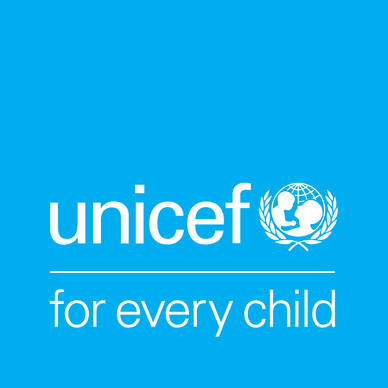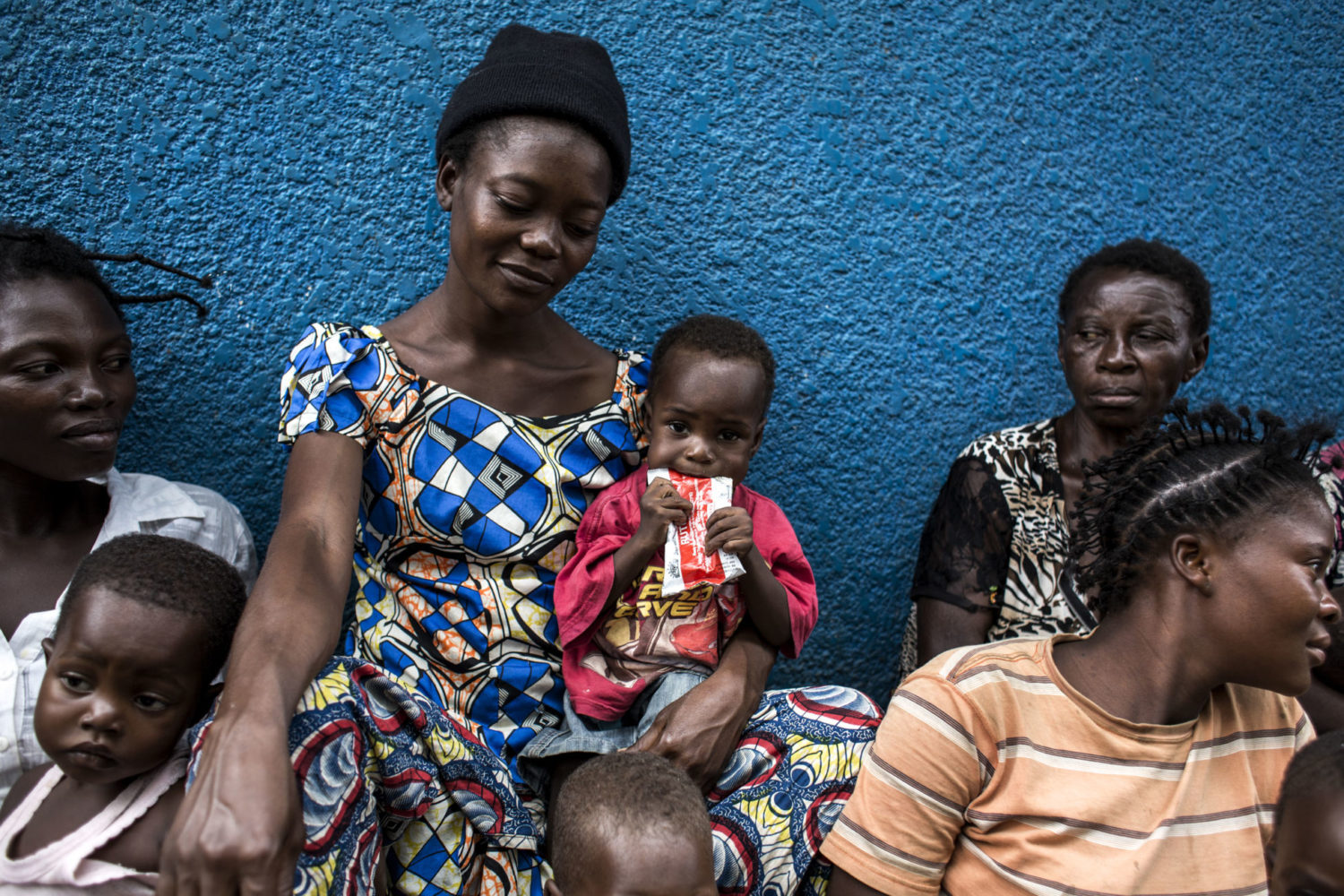OUAGADOUGOU, 7 September 2020 – Over 535,500 children under the age of five suffer from global acute malnutrition, 156,500 of whom are severely malnourished as findings of a new survey[1] show that the nutritional situation of children in Burkina Faso is worsening.
The Nutrition survey in communities and sites with internally displaced persons (IDPs) in Burkina Faso, conducted by the non-governmental organization (NGO) Davycas in July and August 2020 with the support of the Ministry of Health in collaboration with the World Food Programme (WFP) and United Nations Children’s Fund (UNICEF), was carried out in 11 departments with a high concentration of IDPs. These departments are home to a total of 576,972 IDPs out of the 1,013,234 nationally registered,[2] representing 57 per cent of IDPs.
There are over a million internally displaced persons (IDPs) in Burkina Faso,[3] 60 per cent of whom are children, with 3.3 million people acutely food insecure.[4] Children with severe acute malnutrition are nine times more likely to die[5] than well-nourished children.
Infant mortality rates have exceeded the reference threshold of one death per 10,000 children per day in the Barsalogho IDP site (1.3 deaths per 10,000 children) and in the department of Gorgadji (1.7 deaths per 10,000 children).
“The aggravating factors causing the nutritional situation of children to deteriorate in these areas are primarily linked to the displacement of populations due to insecurity, reduced access to livelihoods and reduced access to health care and nutrition,” said James Mugaju, UNICEF Deputy Representative in Burkina Faso. “The coronavirus pandemic has had a brutal impact on households and their ability to provide for the basic needs of their children. Children are paying the highest price, facing a triple crisis: security, health and food.”
According to the survey, in Gorom-Gorom in the Sahel region and the Barsalogho IDP site in the Centre-Nord region, the number of children under 5 years suffering from global acute malnutrition exceeds the World Health Organization (WHO) emergency threshold of 15 per cent, at 18.4 per cent and 16.1 per cent respectively. Equally alarming, the departments of Dori, Gorgadji, Bourzanga and Fada N’Gourma all have a high prevalence of global acute malnutrition, ranging from 12.5 per cent to 13.6 per cent. Children in the departments of Barsalogho, Kongoussi, Ouahigouya, Kaya and Matiacoali also have concerning prevalence rates of global acute malnutrition, ranging from 8.6 per cent to 9.6 per cent.
Areas where children are particularly affected by acute malnutrition also include those with the highest number of acutely food-insecure families. For example, the department of Gorom-Gorom, which has a global acute malnutrition rate over the 15 per cent threshold (18.4 per cent), is in Oudalan province, where food insecurity is in an emergency situation with at least one in five households experiencing an extreme food deficit. All the other surveyed departments are in provinces experiencing a crisis food insecurity phase.[6]
“We need to further intensify efforts with partners and authorities to ensure the continuity of nutrition services in hard-to-reach areas and to provide an integrated package of prevention and treatment of malnutrition to reach these children in urgent need. This is essential because good nutrition for children, from their first days and months, protects them from disease and infection, and helps them to recover when they fall ill,” said James Mugaju.
UNICEF and its partners are increasing their actions in the field. Community health workers are mobilized to travel to the most remote areas in order to screen and treat malnourished children at the community level. They also provide advice on the best feeding practices for infants and young children, including in emergency situations.
UNICEF is supporting health authorities and is strengthening efforts to procure and deliver therapeutic foods (milk and ready-to-use therapeutic foods) needed to treat acute malnutrition to health-care facilities. More than 52,600 cartons of therapeutic food (737 tons) have been delivered to health-care facilities and 51,685 children with severe acute malnutrition have been treated since January 2020.
“We must act and work together to deliver the historic commitment of the 2030 Agenda to intensify our efforts in order to achieve the Sustainable Development Goals (SDGs), particularly in the area of nutrition,” said James Mugaju.
“Well-nourished girls and boys ensure good physical and cognitive development, which will give them equal opportunities to grow up fulfilled and reach their full potential,” he added.
The burden of malnutrition in all its forms is shouldered by children and adolescents from the poorest and most marginalized communities. Improved infrastructure for health, water and sanitation, education and social protection can lead to better nutrition results for all children and end preventable child deaths.
Unicef UK’s Save Generation Covid appeal is supporting children and families impacted by Coronavirus across the world. Visit unicef.uk/donate-generationcovid to donate and help #GenerationCovid
###
ENDS
Notes to editors:
- The coronavirus pandemic is the biggest and most urgent global crisis children have faced since World War Two.
- Children’s lives are being upended. Their support systems ripped away, their borders closed, their educations lost, their food supply cut off.
- An additional 6,000 children around the worldcould die every day from preventable causes over the next six months as the coronavirus pandemic weakens health systems and disrupts routine services like vaccinations. That’s one every 15 seconds.
- UNICEF’s “Save Generation Covid” appeal is the largest ever for children in our 73-year history, and we urgently need funds for lifesaving support and services to ensure that children survive this crisis – and thrive beyond it.
- Together we can Save Generation Covid.Visit unicef.uk/donate-generationcovid to donate and help save #generationcovid.
For more information, please contact:
Yemi Lufadeju, +44 20 7375 6199, [email protected]
Unicef UK Media Team, 0207 375 6030, [email protected]
About UNICEF
UNICEF is the world’s leading organisation for children, promoting the rights and wellbeing of every child, in everything we do. Together with our partners, we work in 190 countries and territories to translate that commitment into practical action, focusing special effort on reaching the most vulnerable and excluded children, to the benefit of all children, everywhere.
Unicef UK raises funds to protect children in danger, transform their lives and build a safer world for tomorrow’s children. As a registered charity we raise funds through donations from individuals, organisations and companies and we lobby and campaign to keep children safe. Unicef UK also runs programmes in schools, hospitals and with local authorities in the UK.
Follow UNICEF UK on Twitter, LinkedIn, Facebook and YouTube.
[1] Enquête nutritionnelle dans les communautés et les sites d’accueil des personnes déplacées internes (PDI) au Burkina Faso [Nutrition survey in communities and sites with internally displaced persons (IDPs) in Burkina Faso], July–August 2020; in the departments of Gorom-Gorom, Dori, Gorgadji, Bourzanga, Fada N’Gourma, Barsalogho (department and IDP site), Kongoussi, Ouahigouya, Kaya and Matiacoali.
[2] National Council for Emergency Relief and Rehabilitation (CONASUR), 8 August 2020.
[3] Humanitarian situation, 8 August 2020, United Nations Office for the Coordination of Humanitarian Affairs (OCHA).
[4] Fiche de communication du cadre harmonisé d’analyse et d’identification des zones à risque et d’estimation des populations en insécurité alimentaire au Sahel et en Afrique de l’Ouest [Harmonized framework for analysis and identification of risk areas, and estimation of food-insecure populations in West Africa and the Sahel communication sheet], 11 July 2020.The document shows that 3.3 million people are in one of the following phases: i) crisis: one in five households have a considerable food deficit, with high rates of global acute malnutrition and a depletion of livelihood assets; ii) emergency: at least one in five households have an extreme food deficit and an extreme loss of livelihood assets; iii) catastrophe: at least one in five households have a complete food deficit and are at risk of death.
[5] WHO child growth standards and the identification of severe acute malnutrition in infants and children: joint statement by the World Health Organization and the United Nations Children’s Fund, 2009.
[6] Fiche de communication du cadre harmonisé d’analyse et d’identification des zones à risque et d’estimation des populations en insécurité alimentaire au Sahel et en Afrique de l’Ouest [Harmonized framework for analysis and identification of risk areas, and estimation of food-insecure populations in West Africa and the Sahel communication sheet], 11 July 2020.


